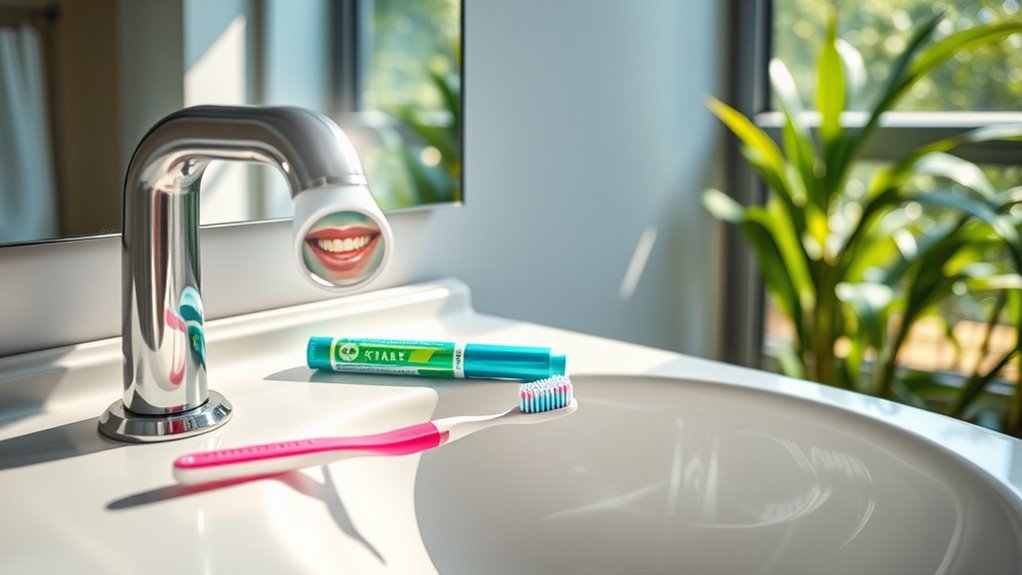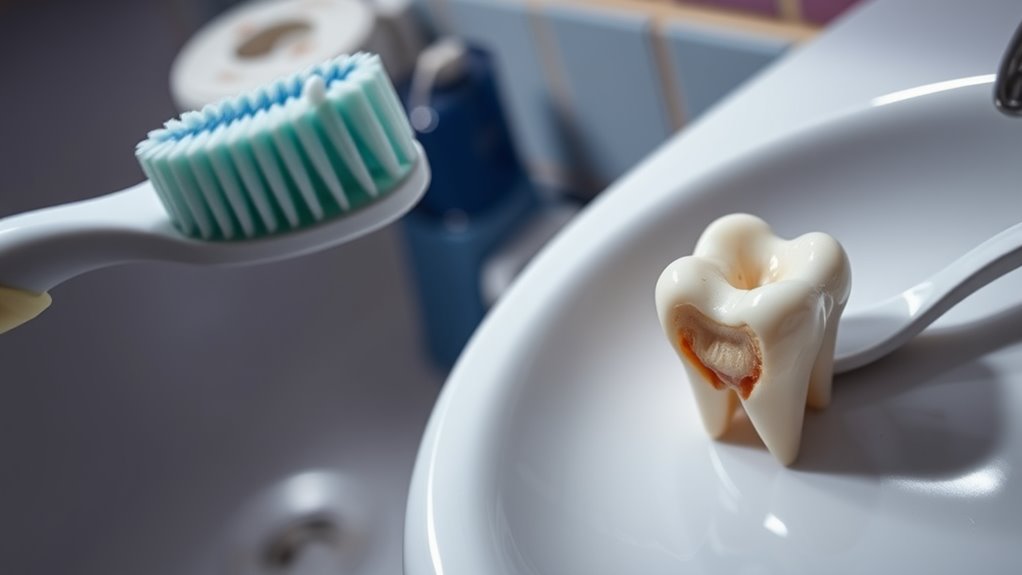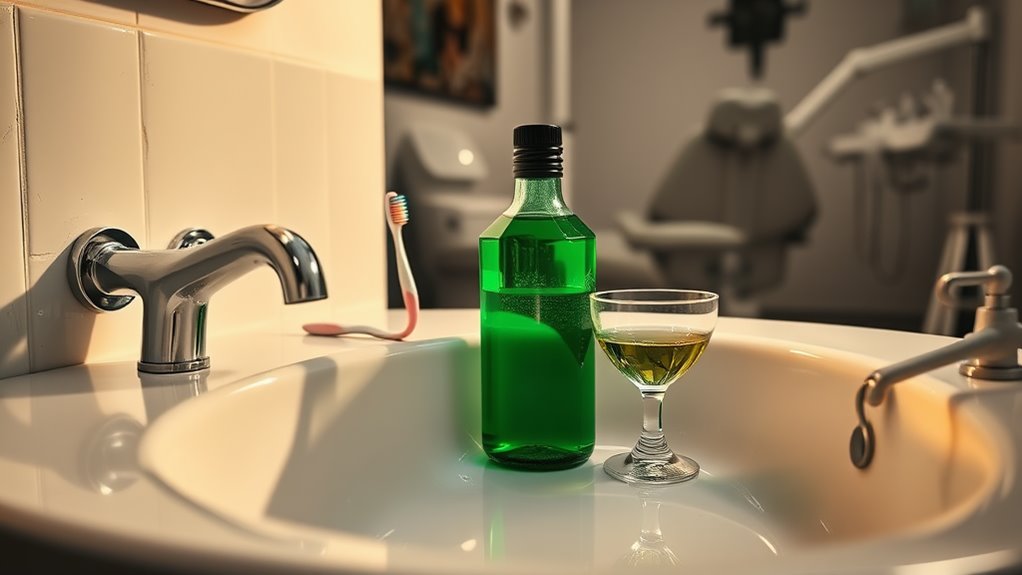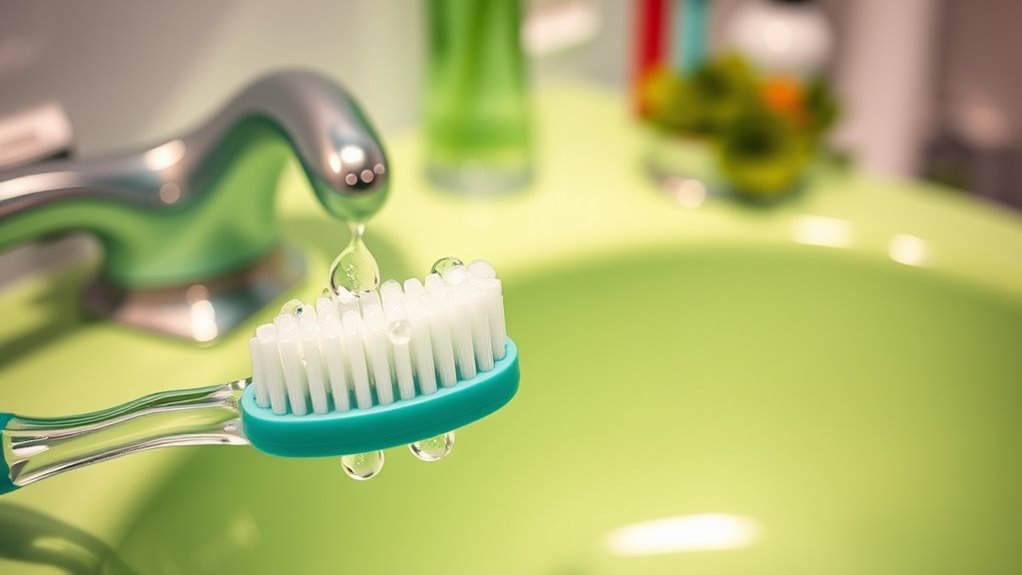Your Toothbrush Is Making You Sick – Here’s Why!
Your toothbrush could be making you sick by harboring millions of dangerous bacteria like E. coli, streptococcus, and staphylococcus. The moist bathroom environment and invisible toilet spray create perfect conditions for these harmful microorganisms to thrive on your bristles. This contamination can lead to oral infections, respiratory problems, and persistent bad breath. Don’t worry though – simple storage and cleaning techniques can protect you from these hidden health threats.
The Hidden Dangers Lurking on Your Toothbrush
Ever wondered what microscopic organisms are making a home on your toothbrush right now? Your brush can harbor millions of bacteria, including E. coli, streptococcus, and staphylococcus.
These microbes thrive in the moist environment of your bathroom and multiply rapidly on bristles between uses.
What’s even more concerning is that every time you flush your toilet, it releases an invisible spray of water droplets containing fecal matter that can travel up to six feet.
If your toothbrush sits exposed on the counter, it’s likely collecting these particles. Additionally, when you don’t properly clean and dry your toothbrush, fungi and mold can develop in the bristles, potentially leading to oral infections, respiratory issues, and other health problems.
Common Bacteria Found on Unclean Toothbrushes
When you examine an unclean toothbrush under a microscope, you’ll find it’s teeming with various types of harmful bacteria. These microorganisms multiply rapidly in the moist environment of your bathroom, turning your dental care tool into a potential health hazard.
| Bacteria Type | Health Risk |
|---|---|
| E. coli | Severe digestive issues |
| Streptococcus | Throat infections |
| Staphylococcus | Skin infections |
| Pseudomonas | Respiratory problems |
| Candida | Oral thrush |
Your toothbrush can harbor these bacteria for weeks if not properly cleaned and stored. The organisms transfer directly into your mouth during brushing, potentially causing infections, gum disease, and other health complications. You’ll be surprised to learn that a single contaminated bristle can host millions of bacterial cells, making proper toothbrush care essential for your overall health.
Health Problems Caused by Contaminated Toothbrushes
These bacteria-laden toothbrushes can trigger a range of serious health issues beyond simple oral problems.
You’re at risk of developing gum disease, tooth decay, and persistent bad breath when using a contaminated brush. Even more concerning, you could face upper respiratory infections as bacteria from your toothbrush travel into your airways.
If you have a compromised immune system, you’re particularly vulnerable to infections from harmful microorganisms on your brush.
The bacteria can cause strep throat, pneumonia, and other systemic illnesses. You might also experience recurring cold sores, oral thrush, or gastrointestinal problems if you’re using a contaminated toothbrush.
Additionally, when you brush with a dirty toothbrush, you risk reintroducing old viruses and bacteria into your system, potentially prolonging existing illnesses.
Best Practices for Toothbrush Storage and Cleaning
To keep your toothbrush free from harmful bacteria, you’ll need to follow several essential storage and cleaning practices.
After brushing, rinse your toothbrush thoroughly with tap water and store it upright to allow proper drying. Never share toothbrushes with others, as this can transfer harmful microorganisms between users.
- Store your toothbrush at least 6 feet away from the toilet to avoid contamination from toilet plume.
- Replace your toothbrush or electric brush head every 3-4 months.
- Keep toothbrushes separated to prevent cross-contamination between family members.
- Avoid storing brushes in closed containers, which can create moist environments where bacteria thrive.
- Sanitize your toothbrush weekly by soaking it in antibacterial mouthwash for 5 minutes.
When to Replace Your Toothbrush for Optimal Health
Maintaining optimal dental health requires recognizing the signs that your toothbrush needs replacement. You’ll need to swap out your toothbrush every 3-4 months, or sooner if the bristles become frayed, discolored, or bent. Don’t wait until your brush looks completely worn out – bacteria can accumulate long before visible damage occurs.
| Warning Sign | What It Means | Action Needed |
|---|---|---|
| Frayed Bristles | Reduced Cleaning Power | Replace Immediately |
| Discoloration | Bacterial Growth | Replace Within 24hrs |
| Illness Recovery | Lingering Germs | Replace After Recovery |
Watch for these red flags and don’t hesitate to replace your toothbrush. If you’ve recently been sick, you should replace it immediately to prevent reinfection. For electric toothbrushes, the same rules apply to replacement heads.




